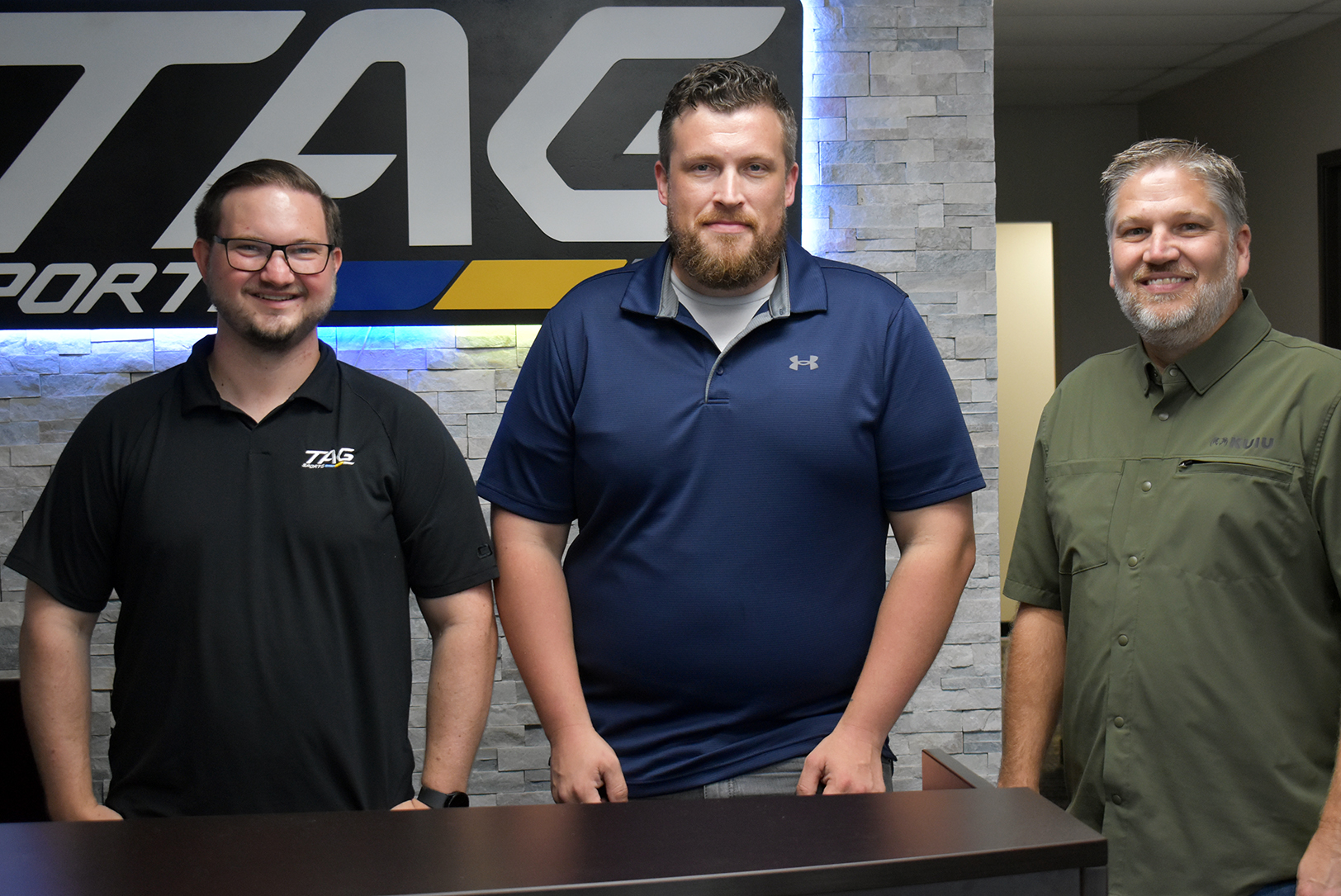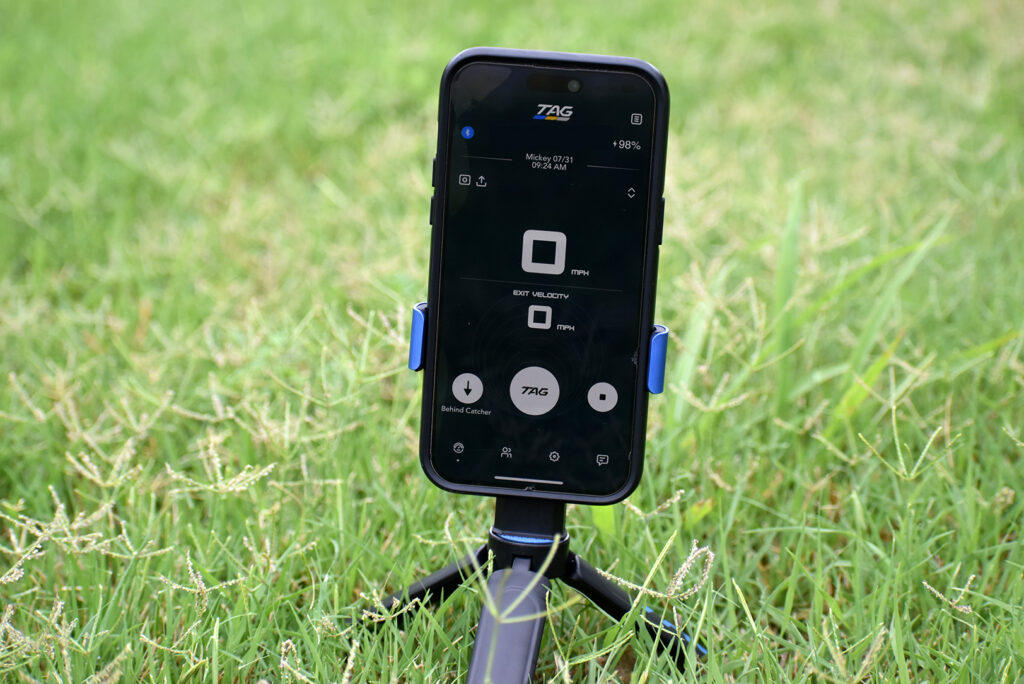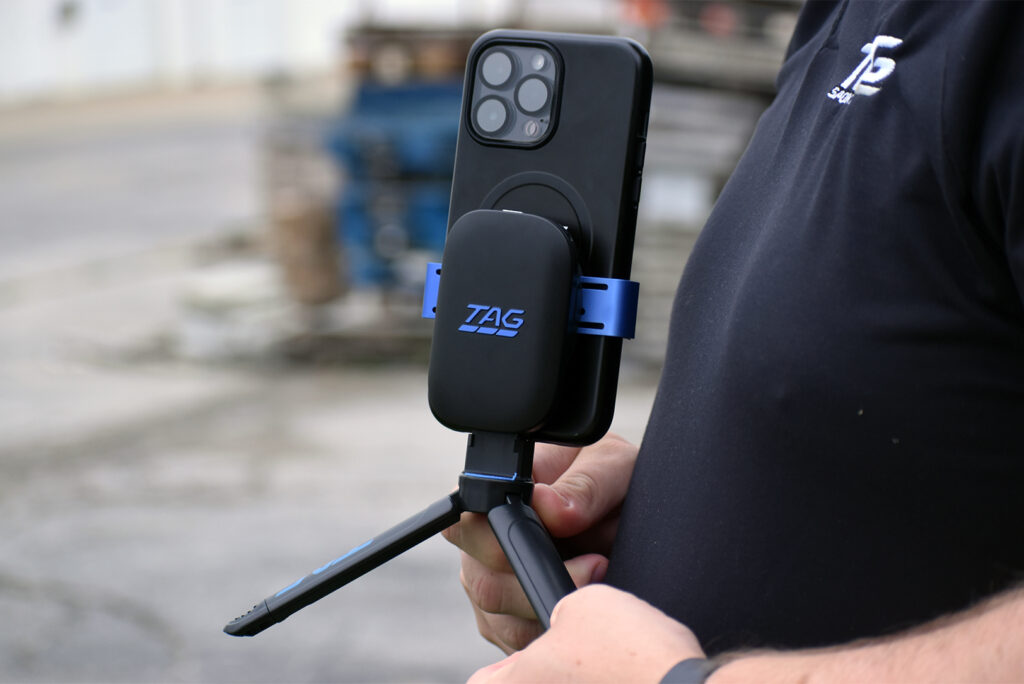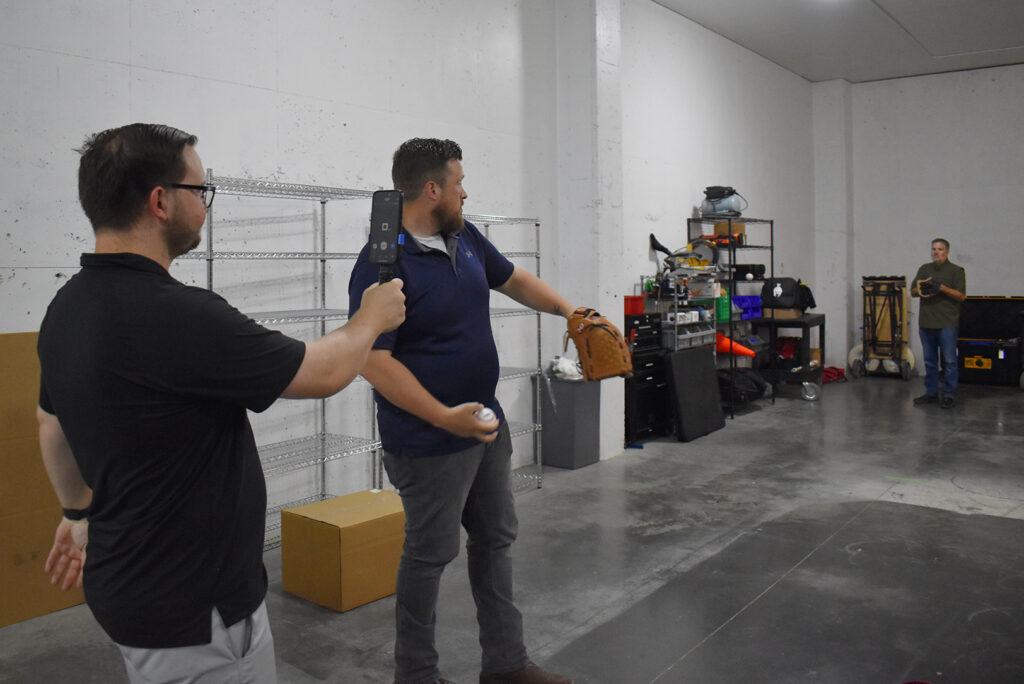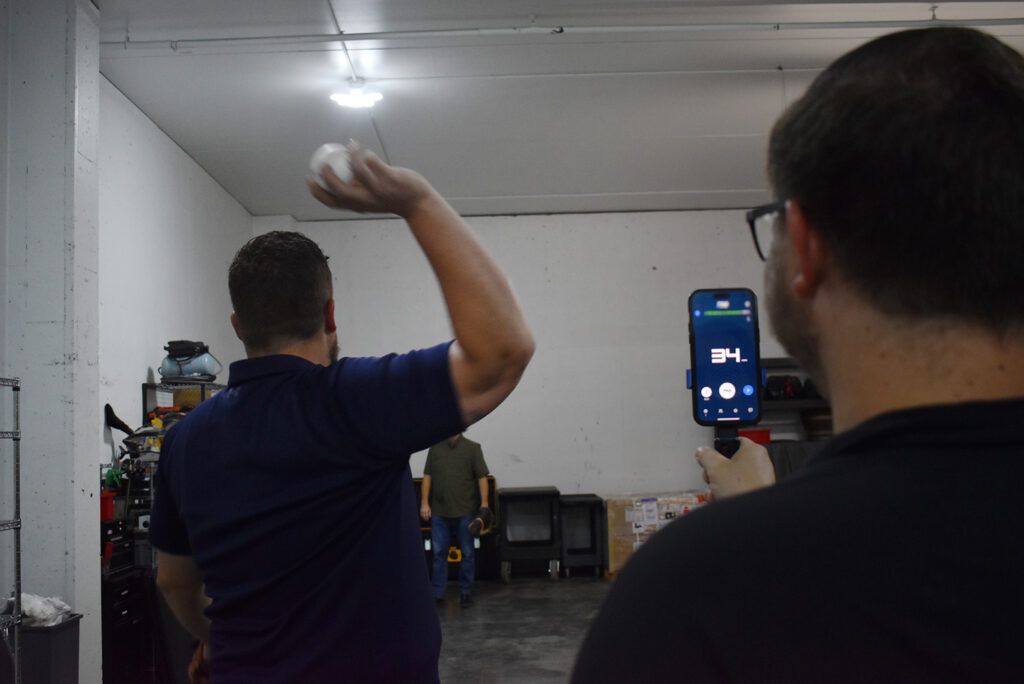When speed is the name of the game, data can be nearly as important as talent, said Jarrod Nichols, emphasizing the role his startup’s radar technology can play in helping baseball and softball athletes measure fastball performance, improve their stats, and swing for the fences.
“Pitch speed has been captured since the early ’70s,” said Nichols, managing director of Lenexa-based TAG Sports. “But now, we can capture it as the ball is releasing, which is one of those stats people want to see: how fast the ball is travelling from the pitcher to the catcher.”
The company’s innovative speed-tracking device, launched earlier this year, is already gaining traction among baseball and softball players, coaches, and curious parents.
The TAG One Sports Radar product includes a compact radar sensor, phone mount, and handle/tripod combo. It connects via Bluetooth to a fully integrated mobile app and is built for easy use.
“You can actually attach the radar right to the back of your phone,” explained Logan Tuel, mechanical engineer at TAG Sports. “We included these devices to make it easier and more versatile.”
A coach right in your pocket
What makes TAG stand out: Its system measures pitch speed, tracks progress, offers coaching advice, and provides visual feedback using AI-powered insights from an in-app coach named ACE (Artificial Coaching Expert).
“You can ask it questions about how to improve your game, about your statistics,” said Tuel, noting a user who threw a bullpen session could use the data gathered to compare themself to historical statistics.
TAG’s app also generates video highlights with overlaid speed metrics. This allows players to share clips, review their mechanics, and get custom feedback.
And ACE can compare player stats to age-specific benchmarks and offer practical ways to improve.
“Let’s say you’re a 14-year-old pitcher averaging 68 miles an hour,” said Caleb Lucas, marketing manager at TAG Sport. “ACE can say, ‘Well, for 14, you should be hitting 70, and here’s how to do that.’”
Training for the whole team
TAG’s journey started not on a baseball field, but in the skies over Antarctica.
“Our founder, Zongo Wang, was doing some research at the University of Kansas. They were flying over Antarctica in a C-130 and had a Doppler radar doing some weather mapping,” Nichols said. “At that moment, he’s like, ‘I want to see if I can miniaturize this and take it to sports.’”
Wang later founded Ainstein, a radar technology company producing safety systems for everything from lawn mowers to drones and self-driving bulldozers to jetpacks. That tech laid the groundwork for TAG Sports’ entry into consumer athletics by using radar in a handheld way.
From the archives: How Tiger Woods’ swing at The Masters was influenced by this Lawrence lab
“There’s 25 million softball and baseball players in the U.S. alone,” Nichols said. “The market was ripe for new innovation.”
Many other radar devices and “speed guns” have existed for decades. TAG wants to offer a product that is affordable, app-integrated, and user-friendly.
“It’s for everybody, not just athletes,” Nichols added. “If I’m a coach of a Little League team, I can assign plans to each one of my players, and then I can look and see what their progress is.”
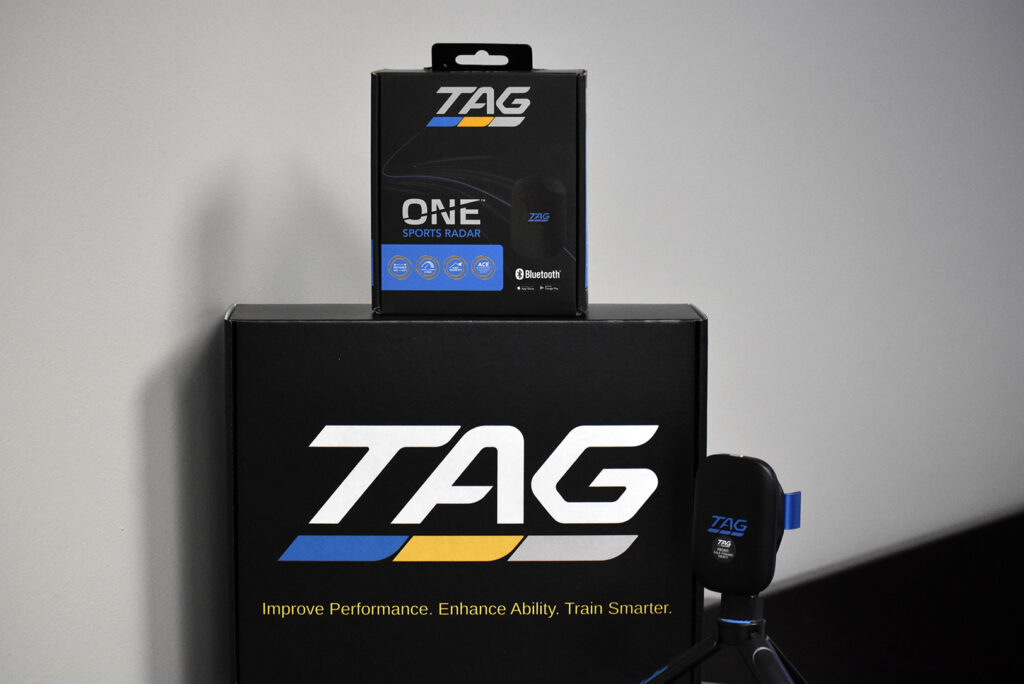
The TAG One Sports Radar product from Lenexa-based TAG Sports; photo by Taylor Wilmore, Startland News
Built in Kansas, backed by community support
TAG Sports operates from Kansas and has leaned heavily into grassroots efforts to build its brand, including field events, Amazon sales, and local radio ads.
“We’re a small but mighty team,” Nichols said. “Just seeing the community respond to the launch of TAG, and that we’re a local Kansas-based company; it’s been really cool to see the pride that people have here.”
The company is also collaborating with the University of Missouri-Kansas City to create an AI internship program while keeping their pricing accessible, even as tariffs fluctuate.
TAG is currently focused on baseball and softball for its products, but the company’s leaders have ambitions to expand into other sport training tools.
“We’re continually thinking of new things and ideas,” Nichols said. “Eventually we’re going to get into bigger and better devices and potentially new sports.”
Data-driven improvement
Recently, TAG showed off its tech at an MLB pitch, hit, and run event in Eudora, Kansas, hosted by D-BAT.
“We set up a station and had little ones come in and throw,” Nichols said. “I was blown away by their performance and just seeing their faces light up when they saw the speed, it was a really neat experience.”
The device is giving families new insight into their kids’ abilities, especially those who’ve never had access to training tools like this before.
“We’ve had videos submitted where the kids guess their speed 20 miles an hour slower than what they actually can do, they just had no idea,” said Lucas.
It’s TAG’s mission to deliver value to players at every level, Nichols emphasized.
“That’s what we want to support, seeing how people improve over time with our platform,” he said.






